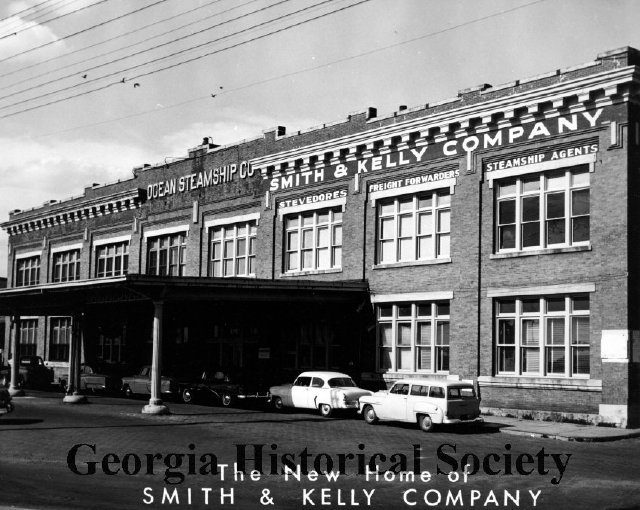The property is now home to Georgia Ports’ Ocean Terminal
The venerable Ocean Steamship Company sailed to an end in the pages of the Savannah Morning News in 1958, a soap-opera-style drama that played out over 11 months in 28 separate stories, and featured the Central of Georgia Railway, the governor, state legislators, state officials and the Georgia Ports Authority.
Headlines such as “Central of Georgia Railway Co. sells Savannah waterfront terminals to Georgia Ports Authority,” “State Auditor to block sale of waterfront terminals,” “New docks purchase proposal presented,” and “Latest plan to buy Central docks appears a dead issue,” stitched together a tattered quilt, one that didn’t cover the whole issue. To comprehend how far Ocean Steamship had fallen, you had to realize how high the company once stood.
It all started in 1872. The Central of Georgia purchased six steamships, and launched the Ocean Steamship Company as a subsidiary. The railway served as an east-west connection to the cotton fields of Georgia and Alabama. The steamship company sailed a north-south passage to Northern markets and mills.
The steamship operation was centered at Vale Royal Plantation. Just upriver from Savannah City Hall, it dated back to the colonial era, and its fields were filled with docks, warehouses and a riverfront terminal. Success followed quickly.
In its annual report for 1875-1876, the Steamship Company posted a profit of $50,268. “This result is regarded quite as favorable as could be expected,” the official report stated. That trend continued into the 1880s. Sailing north, the steamships carried passengers in cabins, and jammed cotton, naval stores (resin and turpentine), and seasonal fruits and vegetables into its holds.
By 1912, Savannah was positioned as the second-largest cotton port in the world, trailing only Liverpool. Ocean Steamship, and the city’s other lines, transported more than 2 million bales. But rough seas were ahead.
The boll weevil, a miniscule beetle some 16 millimeters long, devastated the cotton industry in the 1920s. Production plummeted as acreage fell. To add to Ocean Steamship’s woes, a concurrent increase in highway construction, and the use of private automobiles and trucks, further reduced its revenue.
Hard times continued through the Great Depression. Then, World War II devastated Ocean Steamship. It started the conflict with six ships, and ended with none. Two were sunk by German U-Boats. The others were requisitioned for wartime purposes and could not be restored to civilian operations.
Ocean Steamship’s post-war blues continued until Nov. 21, 1958, when the GPA officially purchased its terminal and docks for $2.8 million. That anticlimactic headline: “(State Auditor) will no longer fight dock sale.”
Today, the GPA’s Ocean Terminal has transformed the old Ocean Steamship property into a world-class facility, one that specializes in breakbulk commodities. Fourteen steamship lines stop there. Two Class I railroads load there. Trucks can reach two interstates in just minutes from there.
And, it’s still making news. In the Dec. 10, 2019, edition of the Savannah Morning News, under the headline “Port of Savannah sets November record,” it was reported that Roll-on/Roll-off traffic at Colonel’s Island at the Port of Brunswick, and Ocean Terminal in Savannah, moved 62,146 units of cars, trucks and heavy equipment in November … up 2,030 units or approximately 1 percent through the first five months of the fiscal year.
PHOTOS COURTESY OF THE GEORGIA HISTORICAL SOCIETY
Sources: Editions and publications of the Savannah Morning News; “The Ocean Steamship Company of Savannah: Savannah Line,” by Edward A. Mueller; “Images of America: Central of Georgia Railway,” by Jackson McQuigg, Tammy Galloway, and Scott McIntosh for the Atlanta History Center; Georgia Historical Society documents; www.cofga.or; gaports.com.
